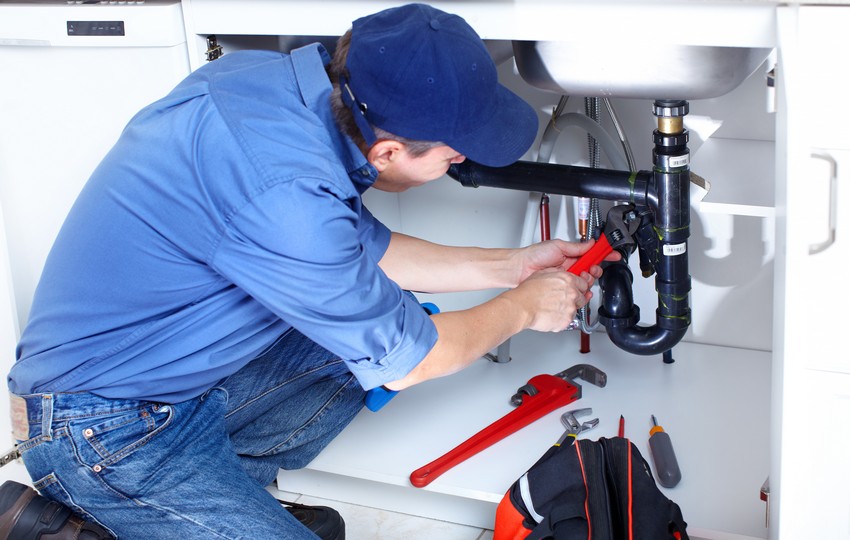 Detecting Damp and Mold Problems: A Homeowner’s Guide
Detecting Damp and Mold Problems: A Homeowner’s Guide

Spotting the early signs of Detecting damp and mold problems in your home isn’t just about maintaining aesthetics; it’s crucial for protecting its structural integrity and ensuring a healthy living environment. In this manual, we dive directly into practical advice for pinpointing different damp manifestations, grasping their origins, and confronting them decisively. Discovering telltale signs such as wallpaper coming loose or a distinct damp odor will guide you in uncovering potentially major complications lurking beneath the surface.
We also delve into effective solutions that address these concerns from root to tip – whether through improved ventilation strategies or targeted rising damp treatments. By arming yourself with this knowledge, you’re not just fixing present issues but safeguarding your space against future ones too.
Understanding Damp: Types and Causes
Rising Damp Explained
Diving straight into rising damp, it’s a sneaky troublemaker. It happens when moisture from the ground makes its way up through walls by capillary action. Think of your home’s walls as straws, sucking water up from the soil.
For those owning homes, this spells trouble as it gradually undermines the integrity of the structure. Rising damp doesn’t like to climb too high though; it usually stops around 1.5 meters above ground level.
Penetrating Damp and Its Impact
Moving on to penetrating damp, this one’s all about invasion from the outside in. Faults in external structures like roofs or pipes let water sneak inside, leading to problems within your home’s structure.
If you spot paint peeling off or wallpaper coming loose without an obvious reason, chances are you’re dealing with penetrating damp caused by some external defects.
Battling Condensation in Homes
Last but not least is condensation – every homeowner’s silent adversary. When warm moist air hits cooler surfaces inside your house, droplets form; welcome condensation issues. This often leads to mould growth if left unchecked.
To keep these uninvited guests at bay, improving ventilation throughout your property is key. An extractor fan here and there can make a big difference in battling those pesky water droplets forming on windowsills and mirrors after a hot shower or cooking session.
Each type of damp comes with its unique set of challenges but understanding them is half the battle won against keeping our homes safe and dry.
Signs of Damp to Watch For
Mold and Mildew Presence
Detecting damp isn’t rocket science. But it’s sneaky.
One tell-tale sign is mold or mildew, especially in corners where walls meet ceilings or floors. If you spot patches of mold concentrated in a specific area, it might be more than just poor cleaning habits. It could indicate a leak or structural weakness allowing moisture in from the outside.
This problem doesn’t just stay on the surface. A musty smell often accompanies these unsightly black spots, signalling that your home’s air quality has taken a hit too.
The appearance of mould growth is not random; its favourite haunts are areas with high humidity – think bathrooms and kitchens – but finding it elsewhere can signal underlying issues with water ingress through defective roof coverings or external walls. This makes removing mould only part of the battle against damp.
Patches and Peeling: More Than Just an Eyesore
Sometimes, what seems like mere cosmetic damage points to deeper troubles. Peeling wallpaper isn’t just an interior design fail; it’s often damp waving hello from behind your walls.
Damp patches appearing on surfaces also shout out loud about possible penetrating damp issues caused by flaws in building fabric such as cracks in external walls or faulty roofing materials allowing water enter places where it shouldn’t be able to reach at all. Addressing condensation promptly by improving ventilation can prevent this scenario from escalating into something worse.
Condensation: The Culprit Behind Water Droplets
damp proof membrane.
- Inadequate heating plays a significant role here, so maintaining a warm yet well-ventilated space helps keep those pesky droplets at bay.
- Kitchen extractor fans aren’t there for decoration; they’re vital tools in combating excess moisture generated during cooking which if left unchecked contributes significantly towards creating ideal conditions for damp cold spaces ripe for mould infestation.
Health Risks Associated with Damp and Mould
Damp and mould aren’t just unsightly; they’re a health hazard too.
Lingering damp creates the perfect breeding ground for mould. This duo can wreak havoc on your health. Prolonged exposure doesn’t do any favours to your respiratory system, often leading to issues like asthma or chronic bronchitis. And it’s not just about breathing problems; those living in damp conditions might find themselves battling constant headaches, skin rashes, or even persistent fatigue.
The Sneaky Culprits: Health Effects of Mould Spores
Mould spores are tiny but mighty foes that float through the air you breathe. Once they invade your space, getting rid of them is no small feat. Inhaling these spores can trigger allergic reactions for many people which manifests as sneezing fits, red eyes, runny noses – basically mimicking hay fever symptoms.
If you have asthma or other pre-existing lung conditions? Brace yourself because these little invaders could make things worse by causing more frequent attacks or severe respiratory distress.
Tackling the Invisible Enemy: Preventive Measures
To dodge these health risks head-on requires tackling moisture at its source. Ensure proper ventilation throughout your home to keep condensation in check – think extractor fans in kitchens and bathrooms where steam loves to linger. NHS guidelines also suggest wiping down surfaces where water collects to prevent mould from gaining a foothold in the first place.
Beyond this DIY approach lies professional help when necessary – don’t hesitate if over-the-counter solutions fail. Hiring professionals to evaluate and tackle the root causes of problems can protect your home’s stability and ensure your family’s wellbeing for years to come.
Effective Solutions for Addressing Damp
Damp doesn’t have to dampen your spirits. Discovering the right methods can empower you to confront it directly.
Improve Ventilation
To combat condensation, start by reducing moisture in the air. More airflow means less water droplets settling on your walls and windows.
Installing an extraction device greatly aids in mitigating dampness, particularly in humidity-prone zones such as culinary spaces and washrooms. A kitchen extractor fan is not just for show; it’s a frontline warrior against steam from cooking or hot showers turning into unwanted guests on your surfaces.
If you’ve noticed signs of damp, such as peeling wallpaper or black mould growth around windows, addressing ventilation should be top of your list. Ensuring good ventilation is key, not just to stop further harm but also to keep the air we breathe indoors fresh and clean.
Rising Damp Treatment Options
Rising damp might sound like something out of a horror story, but fear not; chemical damp proof courses can save the day. These treatments stop moisture rising up through walls by creating a barrier that water cannot pass.
It’s worth noting that rising damp typically doesn’t occur more than 1.5 meters above ground level—anything higher likely points towards another issue such as penetrating damp or leaks. So before jumping to conclusions about rising damp treatment needs, getting a professional assessment could save you time and money in the long run.
RICS guidelines suggest considering all potential sources of moisture before deciding on remedial work.
Inadequate heating contributes significantly to persistent cold spots where condensation forms easily. Thus, ensuring rooms are well-heated during colder months will help keep those troublesome patches at bay.
Rising Damp Treatment Options
Got rising damp? You’re not alone. It’s a pest, but fixable.
Rising damp sneaks up no higher than 1.5 meters above ground level. Spotting moisture or water marks beyond this screams ‘other issues’ loud and clear.
Understanding the beast is half the battle won.
Chemical Damp Proofing: A Modern Shield
A chemical damp proof course injects your walls with a waterproof barrier. Think of it as giving your house an anti-damp vaccine.
This method needs expertise; DIY could turn dicey. Professionals use special tools to pump the chemical into drilled holes along your wall’s mortar line.
The result? A robust invisible shield against rising dampness that lasts for ages.
Dry Base Solutions: No More Wet Walls
- Silicon-based creams work wonders on external walls, repelling water without changing their breathability.
- Electro-osmotic systems push moisture down using electric pulses—sounds high-tech because it is.
- Ventilation bricks increase airflow in sub-floor areas, tackling both damp and timber woes.
Preventative Measures Against Damp
Damp can be a real party crasher in any home. Damp slinks in, wreaks havoc quietly, and proves a tough adversary to banish once it’s made itself at home. But fear not, there are ways to keep your house dry and cosy.
Damp Proofing Magic
A damp proof membrane is like the shield of a superhero for your home. It stops moisture rising from the ground dead in its tracks. Think of it as an invisible barrier that keeps the lower sections of your walls dry and free from unwanted water guests.
Putting in this protective barrier is not only a wise move but absolutely crucial, particularly when it comes to vintage buildings that are prone to becoming hangout spots for moisture. And yes, while installing or upgrading a damp proof course might sound like wizardry, it’s quite straightforward for professionals who know their stuff.
The Role of Ventilation: Your Secret Weapon
Breathing life into your home literally means letting air move freely through rooms. Improve ventilation by cracking open windows or installing kitchen extractors can seem too simple but trust me; they’re game-changers against condensation-related damp issues.
It’s like witnessing beads of water materialize on a chilled glass in the heat of summer, illustrating how condensation emerges when warm, humid air encounters cooler surfaces. By ensuring that air circulates well inside your house, you make those surfaces less inviting for moisture to settle down on them.
In essence, preventing damp isn’t just about big fixes; sometimes small changes have the biggest impact. Ensuring proper ventilation and incorporating protective barriers like a proof membrane go far beyond basic maintenance—they safeguard both the structural integrity and health atmosphere within our homes.
The Role of Ventilation in Combating Damp
Ever walked into a room and felt the air heavy with moisture? That’s condensation at play, folks. When warm moist air hits cold surfaces, water droplets form faster than gossip spreads. Improving ventilation is your secret weapon here.
Improve Ventilation: A Breath of Fresh Air
Kitchen extractor fans play a crucial role, not merely decorative, but as pivotal allies in our battle against moisture buildup. Extractor fans act like a home’s exhalation, removing vapor from culinary activities or steamy baths to maintain lower moisture levels. It’s like giving your home a set of lungs that breathe out the bad air.
But it’s not all about fancy gadgets; simple habits matter too. Opening windows regularly lets fresh air circulate through rooms, pushing out stale, damp-prone air like unwelcome guests at a party.
A well-ventilated home is less likely to suffer from condensation-related problems because it balances indoor and outdoor temperatures more effectively. Think of improving ventilation as setting up an invisible barrier against unwanted moisture creeping into your walls and ceilings.
Breathe Easy With Kitchen Extractors
If there’s one thing kitchens hate, it’s lingering humidity from boiling pots and pans or that dishwasher steaming away after dinner time. Explore the highest-ranked kitchen ventilation systems available. Installing a good quality kitchen extractor can make all the difference by ensuring that steam finds its way outside instead of decorating your walls with mould spots.
In essence, maintaining a moisture-free home isn’t exactly brain surgery; however, it does necessitate a bit of elbow grease from us—chiefly in enhancing air circulation. So let those winds flow freely around your house; you might just find yourself waving goodbye to pesky damp issues for good.
Identifying and Removing Mould Caused by Damp
Mould loves damp. It’s as simple as that.
When water enters your home, whether from a leaky roof or rising damp, it creates the perfect breeding ground for mould. Spotting signs early can save you a world of trouble. Look out for peeling paint or wallpaper, a musty smell, or black patches on walls—these are all tell-tale signs.
To remove mould caused by condensation, first tackle the moisture problem. Improve ventilation with fans in kitchens and bathrooms to whisk away steam from cooking and hot showers. For those stubborn areas where air doesn’t circulate well, consider using a dehumidifier.
Rising Damp Treatment Options
Treating rising damp is crucial to protect your building’s integrity.
A chemical damp proof course might be what you need if rising damp has made itself at home in your property. But remember, this treatment won’t work miracles above 1.5 meters because true rising damp doesn’t usually climb higher than that.
If you find evidence of moisture above this level, it could indicate another issue like defective roof coverings allowing water ingress—a whole different beast needing its own remedy.
Preventative Measures Against Damp
Damp-proofing is more than just an immediate fix; it’s about long-term prevention too. Use materials like waterproof membranes around vulnerable areas such as external walls to stop water seeping through in the first place.
In older properties especially, ensure skirting boards aren’t hiding any unwelcome surprises like salt deposits which suggest penetrating damp issues.
Battling condensation? Increase airflow across cold surfaces where water droplets form before they get cozy enough to invite mould over.
Conclusion
Grasping the origins of moisture and fungus is crucial. Detecting damp and mold problems early can save your home from serious damage. Remember, spotting signs like peeling wallpaper or a musty smell are your first clues.
Tackling these issues head-on means addressing ventilation, perhaps with an extractor fan in the kitchen. Rising damp? It doesn’t stand a chance against proper treatments that reach beyond surface level.
And prevention is always better than cure. By keeping your living area dry, promoting adequate ventilation, you’re effectively leapfrogging towards preserving a wholesome environment.
In essence: observe carefully, act swiftly, prevent diligently. Your home’s integrity and health depend on it.



